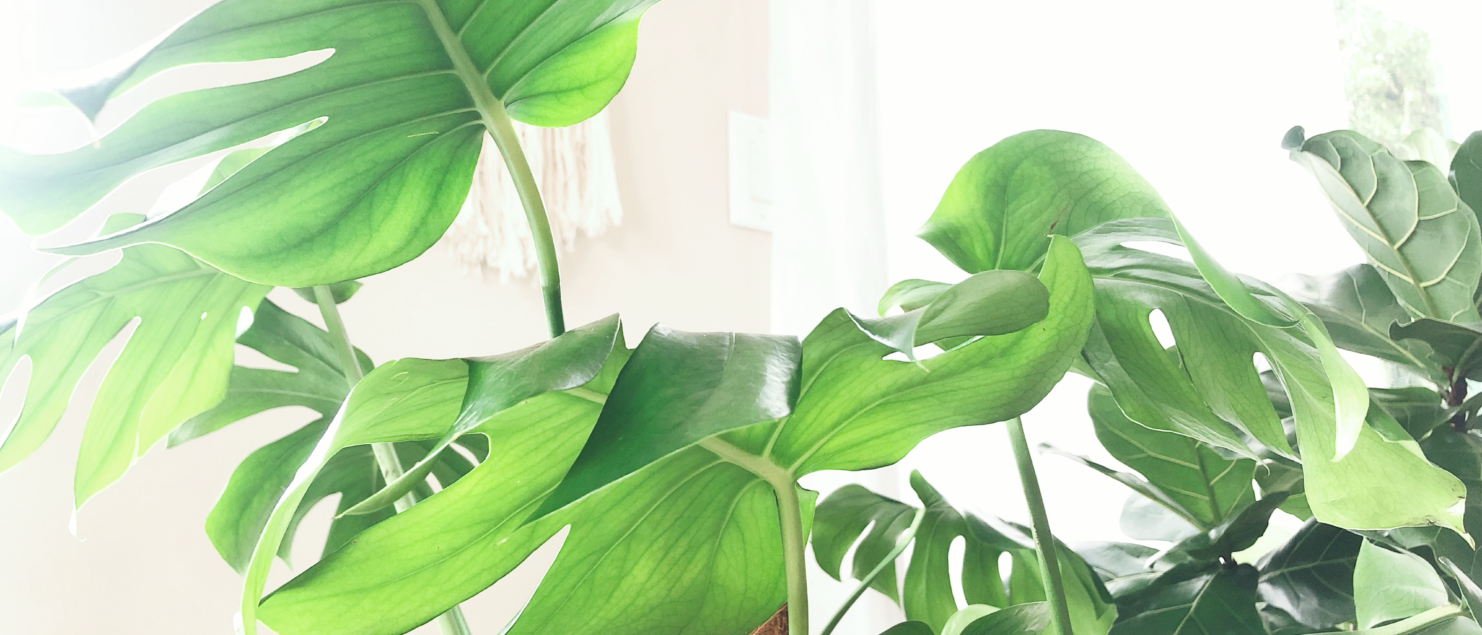Understanding Sunlight Levels For Houseplants
Bright, medium, indirect…What does it all mean?
The amount of light you give your houseplants is one of the most important things to think about when you want happy and healthy plants in your home. Houseplants aren’t going to get the same conditions they would outdoors, even if you mimic it as best as you can it’s never the same.
Figuring out the lighting conditions in your home is the first step to thriving plants and is the first thing I ask any anyone when they want to add plants into their homes. The most common answer I get is…I don’t know.
I’ve seen so many people get confused about their lighting conditions for their houseplants – myself included. When you pick up a plant at a nursery or a plant shop, you often see that label
“Bright-medium indirect light”
Instructions like this are super vague and might leave you more confused. And my interpretation of bright light might be different than someone else’s. But I’m here to help clear up some of the confusion. The first step to houseplant success is understanding sunlight levels for houseplants, and how they can help your grow the houseplant jungle of your dreams!
Here’s a little cheat sheet to help you get started in Understanding Sunlight Levels For Houseplants:

Low Light

Hello darkness!
Let’s start off with the most obvious one – Low light. Commonly seen in north facing windows or no windows at all. A lower lit area is where you’re never going to get any kind of sunlight to reach a plant. Whether it is a more than 5 feet from a window or a window that gets blocked from the light, like from a tree or a heavy curtain. Low light is also to be considered if there’s no windows, like in an office/ workspace.
Houseplants in a lower light setting often don’t thrive. There are some plants that do ok in lower light settings like a Sansevieria, but they are just basically surviving. Plants that are kept in low light conditions don’t receive any energy from the sun. Fertilizing lower light plants may be a temporary solution to the energy issue, but any plant labeled a “low light” plant will be happy with a bit more lighting.
Medium Light

The ideal choice!
Medium light is often referred to either bright or indirect, as well. A brightly lit room is sprinkled with sunlight for a few hours in the day or a sunny south facing window that’s blocked by a sheer curtain. Keeping a plant in a sunny window out of the way of direct afternoon sun rays (or a plant next to a sunny spot) is another way to define medium light. In my home, my bright room gets hit with sunlight on the walls which bounce back to the plants, keeping them away from that direct sunlight.
This is the most common lighting condition in most homes and found on most care guides for houseplants, unless you have desert-type houseplants. Even your lower light houseplant will enjoy a brighter setting now and again. When in doubt, put your plants in a medium light setting and see how it does.
High Light

Sun goddesses, rejoice!
High light or direct sun is commonly in south facing windows. Areas of high light get several hours of direct sunlight. South facing windows will produce that intense afternoon rays that some plants can’t handle. Houseplants in highly lit areas need to be monitored to ensure the plant isn’t drying out or getting burned. Plants that are not use to direct sunshine can develop bleaching and burns on the foliage. If your plant is starting to display this, move your plant a little bit further from the window.
Succulents and cacti are sun lovers and are the ideal plant for a high light area. Some plants can adapt to a brighter area if they are slowly introduced to the space, by moving it closer to the sunlight a few feet every few weeks or so. Plants in big box stores that are labeled “high light” plants need this adjusting due to the fact that most of the houseplants are kept indoors.
It’s Lit

Always make sure you check the plants lighting requirements before you find it a home in your home. Any new plant I always keep an eye on and make sure that it’s doing ok in that area. Your plants will tell you when it’s not happy, and lighting is usually one of the most common culprits.
When in doubt, grow lights are great for any plant. In my experience, I have never had any kind of issues with leaf burning/bleaching or plants growth being stunted due to grow lights.
I hope this gives a little more guidance on understanding sunlight levels for houseplants.
Let’s Get Social!
Instagram @thebotanicalbrunette

